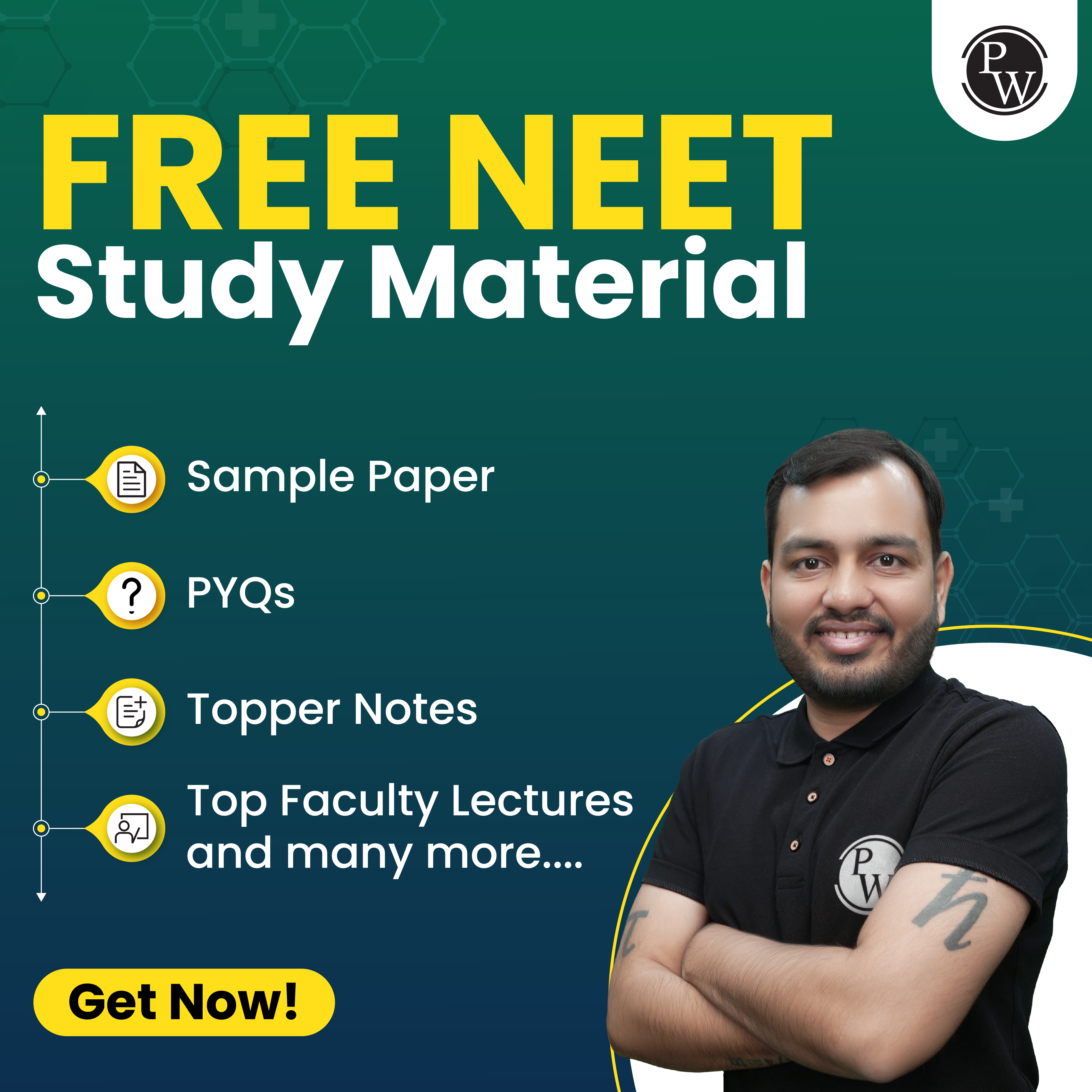
Structural Organisation in Animals MCQ: Structural Organisation in Animals refers to the different levels of organization found in animal bodies, from cells to tissues, organs, and organ systems. Cells within animals perform specific functions, such as muscle cells for movement or nerve cells for communication.
These cells come together to form tissues that combine to create organs like the heart, lungs, and liver. These organs then work together as a system to perform essential functions necessary for survival, such as digestion or respiration.NEET Study Material, Free Sample Papers, Book, Toppers Notes, PYQs
Structural Organisation in Animals MCQ Overview
The structural organization is crucial in determining an animal's capabilities and behavior, with different organisms possessing specialized structures adapted for their environment and lifestyle. For example, birds have lightweight bones designed for flight, while whales include thick blubber layers that aid in insulation during deep sea dives. Understanding the structural organization in animals allows us to appreciate the diversity of life on earth and how each organism has evolved unique adaptations for its niche within its ecosystem.| NEET Exam Important Links | |
|---|---|
| NEET Syllabus | NEET Biology Notes |
| NEET Eligibility Criteria | NEET Exam Pattern |
| NEET Previous Year Question Papers | NEET Biology Syllabus |
Structural Organisation in Animals MCQ
Q 1. The oversized amoeba cells that are part of our innate immune system found in areola tissue are called:
- Macrophages
- Mast cells
- Fibroblasts
- Adipocytes
Answer - a, Macrophages
Explanation: Macrophages are large amoeboid cells in the areolar tissue and form a part of our innate immune system. They are vital in engulfing and destroying foreign particles, bacteria, and even dead cells. Macrophages can also act as messengers for our adaptive immune system by alerting Secondary Lymphoid Organs to commence an immune response.
Q 2. Cells that release heparin and histamine into the blood are:
- Basophils
- Mast cells
- Eosinophils
- Neutrophils
Answer - a, Basophils
Explanation: Basophils are a white blood cell type involved in allergic reactions and immune responses. They contain granules filled with various substances, including histamine and heparin. When basophils encounter an allergen, they release histamine, which triggers allergic symptoms such as inflammation, itching, and vasodilation.
Also Check:
Q 3. This feature is not found in Periplaneta Americana
- During embryonic development, indeterminate and radial cleavage occur
- Schizocoelom as the body cavity
- metamerically segmented body
- exoskeleton composed of N-acetyl glucose-amine
Answer - a, During embryonic development, indeterminate and radial cleavage occur
Explanation: The Periplaneta Americana does not have an indeterminate and radial cleavage during embryonic development or a schizo-coelom in the body cavity.
Q 4. The function of the gap junction is to
- Facilitates communication between neighboring cells by quickly connecting the cytoplasm. Movement of ions, small molecules, and some large molecules
- prevent substances from leaking through tissues
- Separate two cells from each other
- Perform cementation to join adjacent cells.
Answer - a, facilitates communication between neighboring cells by quickly connecting the cytoplasm. Movement of ions, small molecules, and some large molecules
Explanation: Gap junction plays an essential role in the structural organization of animals by connecting adjoining cells. It facilitates fast and direct communication between cells, allowing the rapid transfer of ions, small molecules, and some larger molecules.
It also prevents the leakage of substances across tissue and separates two cells from each other. Finally, it performs a cementing function to keep neighboring cells together.Q 5. This accurately describes an animal
- Earthworm - the alimentary canal consists of a sequence of the pharynx, esophagus, stomach, gizzard, and intestine
- Rat - left kidney is slightly higher in position than the correct one
- Cockroach - 10 pairs of spiracles (8 pairs on the abdomen and 2 pairs on the thorax)
- Frog — body divisible into three regions — head, neck, and trunk
Answer - a, Earthworm - the alimentary canal consists of a sequence of the pharynx, esophagus, stomach, gizzard, and intestine
Explanation: Earthworms have a well-defined alimentary canal consisting of different regions. The food enters through the mouth or the pharynx, then passes through the esophagus, stomach, gizzard (which acts as a grinding organ), and finally into the intestine for digestion and absorption of nutrients.

Q 6. In which of the following preparations are you likely to come across cell junctions most frequently?
- Hyaline cartilage
- Thrombocytes
- Ciliated epithelium
- Tendon
Answer - c ciliated epithelium
Explanation: Cell junctions are found in tissues that hold cells together and form a barrier between them and their environment. Ciliated epithelium is an example of a type of tissue where cell junctions are typically found, allowing for the movement of particles across the surface of the cells.
Q 7. The non-excitable, variously shaped, and found between neurons are
- Dendrites
- Nissibodies
- Glial cells
- Schwann cell
Answer - c, Glial cells
Explanation: The Glial cells are non-excitable cells that provide support and insulation to neurons. They come in various shapes and sizes and are found among neurons. They help maintain the structural organization of the nervous system, providing physical protection for neurons and helping to form pathways for communication between them.
Also Check:
Q 8. How are skeletal muscles similar to visceral muscles?
- shape of muscle fibers.
- Muscle fibers have a certain number of nuclei.
- Presence of actin and myosin filaments.
- Presence of light and dark bands.
Answer - c, Presence of actin and myosin filaments
Explanation: Skeletal muscles resemble visceral muscles in the presence of actin and myosin filaments.
Actin and myosin filaments are the primary components responsible for muscle contraction in skeletal and visceral muscles. These filaments interact with each other to generate the sliding movement that results in muscle contraction. The presence of actin and myosin filaments is a shared characteristic between skeletal and visceral muscles. However, there are differences between skeletal and visceral muscles in the other aspects mentioned:- Shape of muscle fibers: Skeletal muscle fibers are typically elongated and cylindrical, while visceral muscle fibers can have various shapes, such as spindle-shaped or branching, depending on the organ they are present in.
- Number of nuclei in muscle fibers: Skeletal muscle fibers are multinucleated, meaning they have multiple nuclei located along their length. In contrast, most visceral muscle fibers have a single nucleus.
- Presence of light and dark bands: Skeletal muscles display striations, which result from the arrangement of alternating light (I band) and dark (A band) bands. Visceral muscles lack this striped appearance and do not exhibit well-defined light and dark bands.
Q 9. Which ion is necessary for the contraction of a muscle and nerve impulse transmission?
- N+
- K+
- Ca++
- None of the above
Answer - c, Ca++
Explanation: In order for skeletal muscles to contract and nerve impulses to travel across synapses, calcium ions are necessary.
Q 10. Bipolar neurons are found in human ______
- Brain
- Spinal cord
- Embryonic stages
- Olfactory epithelium
Answer - d, olfactory epithelium
Explanation: Bipolar neurons are found in humans in the following locations:
- Olfactory epithelium: Bipolar neurons are present in the olfactory epithelium in the nasal cavity. These specialized neurons have a bipolar shape, with one axon and one dendrite extending from opposite ends of the cell body. They detect and transmit olfactory signals, allowing us to sense and interpret smells.
- Retina of the eye: Bipolar neurons are also found in the retina, the light-sensitive tissue at the back of the eye. In the retina, bipolar neurons form a vital part of the visual pathway, transmitting signals from photoreceptor cells (rods and cones) to ganglion cells, which send the information to the brain for further processing.
NEET Previous Year Question Papers
Q 11. The epiglottis, pinna, and tip of the nose contain the following types of cartilage:
- Elastic
- Hyaline
- Fibrous
- Calcified
Answer - a, Elastic
Explanation: The type of cartilage present in the epiglottis, pinna (external ear), and tip of the nose is elastic cartilage.
Elastic cartilage is a specialized type of cartilage characterized by a high concentration of elastic fibers within its matrix. This gives it the ability to be more flexible and elastic compared to other types of cartilage. It is found in body areas that require structural support and elasticity. The epiglottis is a flap-like structure located at the tongue's base, preventing food from entering the trachea during swallowing. The pinna, or auricle, is the ear's visible external portion that helps collect sound waves. The nose tip also contains elastic cartilage, providing structure and flexibility to the nasal region. The articular surfaces of bones, the trachea, and the costal cartilage of the ribs are all covered in hyaline cartilage. Fibrous cartilage is characterized by its dense collagen fiber content and is found in structures such as intervertebral discs and the pubic symphysis. Calcified cartilage is a type of cartilage that has undergone mineralization and is typically found in areas such as the growth plates of developing bones.Q 12. What type of animal tissue changes a blood vessel's diameter?
- Epithelium
- Connective
- Muscle
- Neural
Answer - c, muscle
Explanation: The type of animal tissue that changes the diameter of a blood vessel is muscle. Muscle cells can contract and relax, changing the size of the walls of the blood vessels. This allows for efficient circulation and the delivery of oxygen and other nutrients around the body.
Q 13. The body cells in cockroaches discharge their nitrogenous waste in the hemolymph mainly as
- ammonia
- potassium urate
- urea
- calcium carbonate
Answer - b, potassium urate
Explanation: Rather than ammonia, urea, or calcium carbonate, cockroaches release their nitrogenous waste mainly in the form of uric acid or potassium urate in the hemolymph.
Like many insects, cockroaches have a unique excretory system called Malpighian tubules. These tubules are responsible for removing nitrogenous waste from the body. The cells of cockroaches metabolize proteins and produce ammonia as a waste product. However, instead of excreting ammonia directly, it is converted to uric acid or potassium urate within the cells. These waste products are less toxic and less soluble in water, making them more suitable for excretion in the relatively dry environment of insects. Ammonia and urea are the primary nitrogenous waste products in vertebrates, including humans. Ammonia is highly toxic and requires significant water for dilution, while urea is less toxic and can be excreted in a more concentrated form. Calcium carbonate is not a nitrogenous waste product but is involved in shell formation in some organisms. Therefore, in the case of cockroaches, the body cells discharge their nitrogenous waste in the form of uric acid or potassium urate, allowing for efficient excretion in their environment.Q 14. The kind of epithelium which forms the inner walls of blood vessels is
- cuboidal epithelium
- columnar epithelium
- ciliated columnar epithelium
- squamous epithelium
Answer - d, squamous epithelium
Explanation: The kind of epithelium which forms the inner walls of blood vessels is the squamous epithelium. This type of epithelium consists of flattened cells arranged in a single layer that provides a smooth surface for substances to travel through with minimal resistance. As such, it is an ideal form for the inner walls of blood vessels, which are required to facilitate the transport and circulation of blood throughout the body.
Q 15. The epithelial tissue on the inner surface of bronchioles and fallopian tubes is
- cuboidal
- glandular
- Ciliated
- squamous
Answer - d, ciliated
Explanation: The epithelium of the bronchioles and fallopian tubes is ciliated, meaning it is covered in tiny hair-like structures called cilia that are involved in the movement. The cilia help to move air or mucus through the tubes.
Q 16. In which part of the reproductive system is male cockroach sperm stored?
- Vas Deferens
- Testes
- Mushroom glands
- Seminal vesicles
Answer - d, Seminal vesicles
Explanation: Sperms in male cockroaches are stored in the seminal vesicles. It is part of the reproductive system that stores and helps produce and transport sperm cells. It also helps to protect them against environmental stressors, making sure they are healthy and viable when it comes time to fertilize a female's eggs.
NEET 2025 preparation is very tough and you need a companion to reach your destination fast. This companion is Physics Wallah which will guide you throughout your journey with various tools like NEET online coaching , video lectures, syllabus-oriented study material, and MCQ test for each unit.Structural Organisation in Animals MCQ FAQs
What is structural organization in animals ISC Class 11?
What is the organization of the animal body?
What are the four levels of structural organization in animals?
What is the structural organization of the cell?
What is structural organization in biology?










